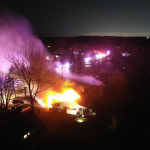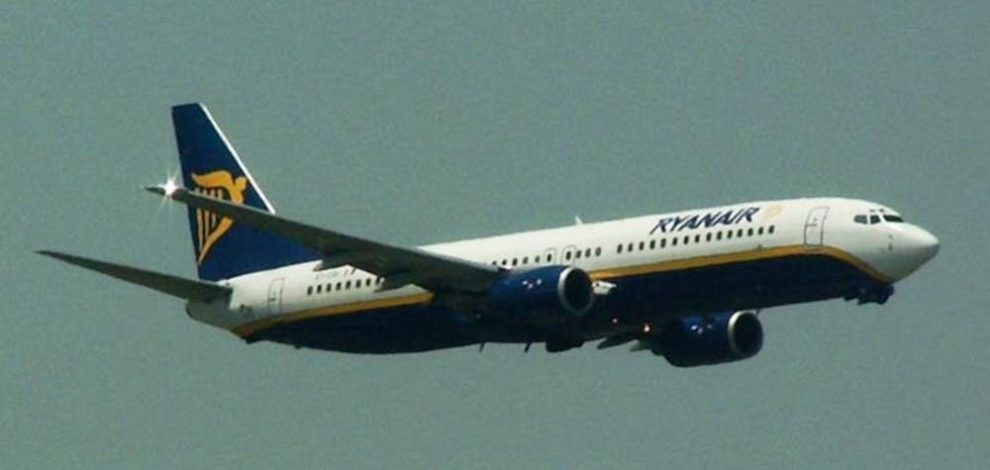The catastrophic crashes of two Boeing 737 Max 8 planes in less than five months have focused attention on what information the company shared with pilots and how much training they received on the new aircraft.
Aviation experts also now question whether pilots for some foreign airlines are prepared to handle emergency situations.
The accidents involving Lion Air Flight 610 off the coast of Indonesia on Oct. 29 and Ethiopian Airlines Flight 302 on March 10 just outside the capital city of Addis Ababa killed all aboard, a total of 346 passengers and crew.
The crashes are still under investigation, but the Ethiopian transport minister said there are “clear similarities’’ in the doomed planes’ movements, with erratic changes in speed and altitude. In both cases the pilots unsuccessfully attempted to return to the airport a few minutes after takeoff before the aircraft nosedived.
While signs point to a faulty sensor linked to a new feature of the jet’s flight-control system as the likely source of the problem, some industry observers have also noted pilots in many other countries don’t undertake nearly as extensive a training regimen as their American peers.
To fly for one of the scheduled U.S. airlines or their regional carriers, the Federal Aviation Administration requires an Airline Transport Pilot certificate, which calls for at least 1,000-1,500 flight hours, depending on how the training was done. And pilots hired by the major airlines typically have much more experience than that.
By comparison, the roughly equivalent Multi-crew Pilot License issued by the International Civil Aviation Organization (ICAO), which takes a different approach to training, can be earned with as little as 200 flight hours.
Brent Bowen, professor of aeronautical science at Embry-Riddle Aeronautical University and former dean of its College of Aviation, said most U.S. pilots come from military or college-based programs and have four-year degrees. That’s often not the case elsewhere, he said, especially in developing countries.
“Some nations hire pilots basically off the street without a degree and send them to 18 months of training, then put them in the co-pilot seat of a 737,’’ Bowen said. “You can pretty much say the co-pilots at our major airlines in the U.S. have probably 10 times the amount of experience that some countries’ co-pilots have.’’
Court Rules 12-Year-Old’s Mother Cannot Read Her the Bible, Take Her to Church
Illinois man charged with arson after allegedly setting home ablaze on Thanksgiving
USCIS halts ‘all asylum decisions’ after DC shooting of National Guard members
Abbey Gate Gold Star father blisters Biden after Afghan national allegedly ambushes 2 National Guardsmen in DC
Northwestern to pay $75M in federal civil-rights deal after antisemitism probes
Utah death row inmate with dementia dies of natural causes 3 months after execution was halted
At least two reported victims with gunshot wounds at Valley Fair Mall in California on Black Friday: police
State Department ‘immediately’ halts all Afghan passport visas following deadly National Guard attack
Trump plans ‘full and complete pardon’ for former Honduran president convicted of drug trafficking
EXCLUSIVE: Stefanik steamrolls top conservative opponent; GOP leaders hand her commanding edge in NY primary
A look back at the biggest presidential Thanksgiving scandals, surprises
Erika Kirk Shares First Thanksgiving Message Since Her Husband’s Passing
Political turkeys of 2025: Blunders of 2025 that will never be pardoned by the public
Afghan withdrawal refugees had ‘free rein’ on US bases in 2021, sources said, leaving in Ubers untracked
USA Today’s Spin on National Guard Shooting Shows Why Legacy Outlets Are Dying
Ethiopian Airlines, which before this accident had a stellar safety record, said the captain of Flight 302, Yared Getachew, was an experienced pilot with more than 8,000 flight hours. However, co-pilot Ahmed Nur Mohammed had only 200 hours of flight time, according to the company. Both trained at the airline’s academy.
In addition, the New York Times reported Thursday that Getachew did not receive simulator training for the Max plane, even though Ethiopian Airlines was among the first carriers to acquire that teaching device, and it was operational by January. It wasn’t clear whether Nur trained on a Max simulator.
The airline challenged the report’s accuracy and said in a statement both pilots completed the “differences training’’ recommended by Boeing before upgrading from the old 737 to the Max model, adding that the pilots were also briefed on the FAA directive following the Lion Air crash.
Ethiopian did not address whether Getachew and Nur trained on a Max simulator, but noted that the machine does not replicate the problems apparently created by the new software in the Max flight-control system, known as MCAS.
What happens if?
The time spent training on simulators is particularly critical to developing the ability to respond to emergencies, said Robert Ditchey, a former Navy pilot and co-founder of America West Airlines who used to hire and train pilots.
“The only way you get that kind of training – what happens if your engine quits; what happens if this fails or that fails – is in the simulator,’’ Ditchey said, pointing out U.S. airlines have more and higher-quality simulators than their foreign counterparts.
“If they don’t have simulators, they can’t do it. So if you’re Kazakhstan and you don’t have your own simulator, you can’t teach that kind of stuff. The only training you can give your pilots is normal stuff. You don’t teach them engine outage, you don’t teach them emergency, you don’t teach them if the airplane’s on fire. So foreign airlines are limited by a number of factors, one of the major factors being what’s available to them.’’
Though Ditchey lauded Ethiopian, which does have a Max simulator, he also said most developing countries lack the kind of aviation infrastructure found in the U.S., where there are plenty of flight schools and all five of the armed service branches train pilots.
Story cited here.
























